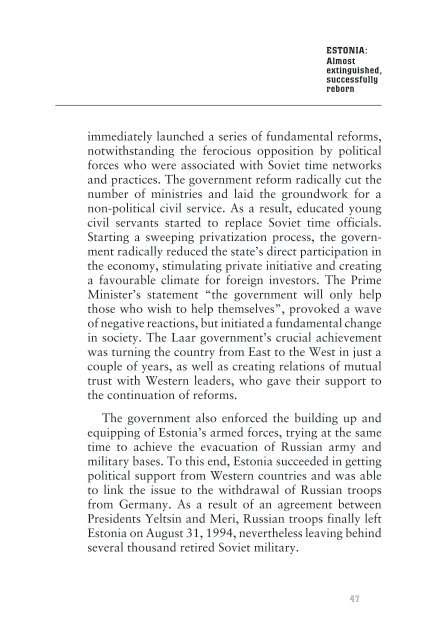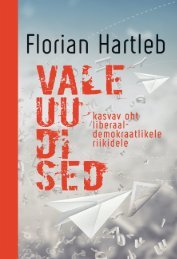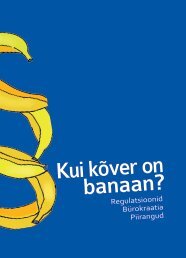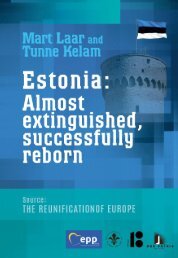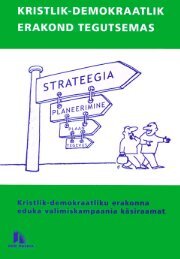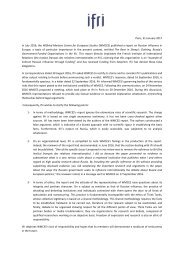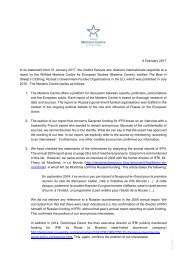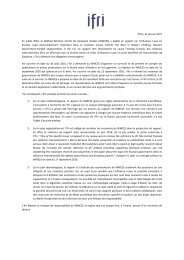ESTONIA: Almost extinguished, successfully reborn
The following text is the shortest possible review to help inform friends and guests from abroad about Estonia’s experience with foreign occupation and totalitarianism as well as its road to peacefully re-establishing national inde-pendence on the basis of democracy. Tunne Kelam Member of the European Parlament
The following text is the shortest possible review to help inform
friends and guests from abroad about Estonia’s experience with
foreign occupation and totalitarianism as well as its road to
peacefully re-establishing national inde-pendence on the basis
of democracy.
Tunne Kelam
Member of the European Parlament
Create successful ePaper yourself
Turn your PDF publications into a flip-book with our unique Google optimized e-Paper software.
<strong>ESTONIA</strong>:<br />
<strong>Almost</strong><br />
<strong>extinguished</strong>,<br />
<strong>successfully</strong><br />
<strong>reborn</strong><br />
immediately launched a series of fundamental reforms,<br />
notwithstanding the ferocious opposition by political<br />
forces who were associated with Soviet time networks<br />
and practices. The government reform radically cut the<br />
number of ministries and laid the groundwork for a<br />
non-political civil service. As a result, educated young<br />
civil servants started to replace Soviet time officials.<br />
Starting a sweeping privatization process, the government<br />
radically reduced the state’s direct participation in<br />
the economy, stimulating private initiative and creating<br />
a favourable climate for foreign investors. The Prime<br />
Minister’s statement “the government will only help<br />
those who wish to help themselves”, provoked a wave<br />
of negative reactions, but initiated a fundamental change<br />
in society. The Laar government’s crucial achievement<br />
was turning the country from East to the West in just a<br />
couple of years, as well as creating relations of mutual<br />
trust with Western leaders, who gave their support to<br />
the continuation of reforms.<br />
The government also enforced the building up and<br />
equipping of Estonia’s armed forces, trying at the same<br />
time to achieve the evacuation of Russian army and<br />
military bases. To this end, Estonia succeeded in getting<br />
political support from Western countries and was able<br />
to link the issue to the withdrawal of Russian troops<br />
from Germany. As a result of an agreement between<br />
Presidents Yeltsin and Meri, Russian troops finally left<br />
Estonia on August 31, 1994, nevertheless leaving behind<br />
several thousand retired Soviet military.<br />
47


